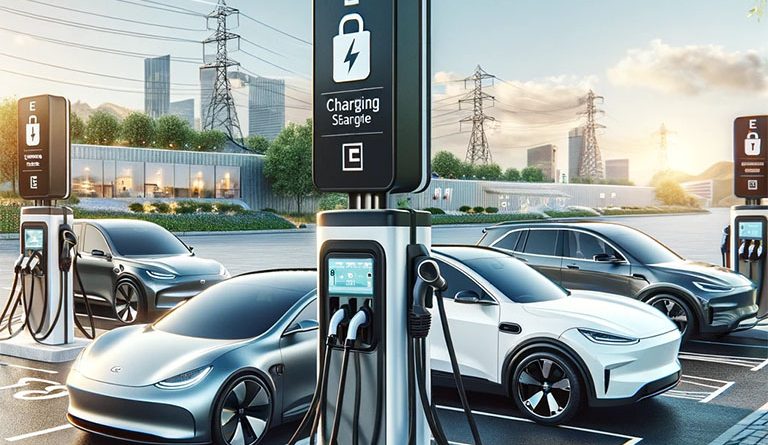The Universal Plug: Tesla’s Charging Standard Revolutionizes Electric Mobility
The electric vehicle (EV) landscape is undergoing a significant transformation as Tesla’s North American Charging Standard (NACS) gains momentum as the industry standard. This movement, underscored by Stellantis’s recent announcement to adopt Tesla’s EV charging protocol, is not just a win for Tesla but a pivotal moment for the entire automotive sector. This adoption signifies a collective stride towards enhancing electric mobility’s accessibility, convenience, and, ultimately, its global uptake.
The Genesis of NACS – Tesla’s Strategic Leap
Tesla’s NACS, initially exclusive to its models, embodies a broader vision for an interconnected and standardized EV infrastructure. Its evolution from a proprietary system to an open-source standard symbolizes Tesla’s commitment to accelerating EV adoption. By licensing NACS freely, Tesla has laid the groundwork for a unified charging ecosystem, encouraging widespread industry buy-in. This section will explore the origins of NACS, its technological merits, and how it epitomizes Tesla’s broader mission to revolutionize transportation.
The Unified Front – Automakers Rally Behind NACS
The unanimous shift towards NACS by leading automakers heralds a new era of electric mobility. This section will dissect the reasons behind the industry’s alignment with Tesla’s standard, from the technical advantages of NACS — such as its superior charging speed and efficiency — to the strategic benefits of adopting a universal charging solution. It will spotlight the collaborative efforts of automakers, including Ford, Volkswagen, and now Stellantis, and their timelines for integrating NACS, underscoring the collective push towards simplifying and enhancing the EV charging landscape.
Bridging the Divide – The Impact on Consumers and Infrastructure
The adoption of NACS is set to transform the EV ownership experience, offering drivers seamless access to an expansive network of high-speed charging stations. This section will delve into the consumer benefits of a standardized charging infrastructure, including the potential for faster charging times, increased station availability, and the elimination of adapter-related inconveniences. Additionally, it will cover the strategic expansions of the charging network, including the IONNA project and the role of partnerships in bolstering the ecosystem, ensuring that the infrastructure keeps pace with the growing EV market.
Navigating the Transition – Challenges and Future Prospects
While the shift to NACS presents a monumental leap forward, it also poses challenges, from logistical hurdles in retrofitting existing infrastructure to the need for global standardization. This section will explore these obstacles in detail, offering insights into how automakers, charging network providers, and regulators are addressing these challenges. It will also highlight the opportunities this transition presents, from fostering innovation in charging technology to enhancing the economic viability of EVs, setting the stage for a more sustainable and efficient future in transportation.
Tesla’s push to standardize the EV charging interface is a game-changer for the automotive industry. By rallying automakers and charging providers around a common standard, Tesla is not only enhancing the EV ecosystem but is also paving the way for a more sustainable future. As the industry continues to coalesce around NACS, the vision for an integrated, accessible, and efficient global charging network is gradually becoming a reality, marking a significant stride towards achieving universal electric mobility.
Sources:
- Motortrend.com for information on automakers adopting NACS.
- Electrive.com for details on NACS becoming an official charging standard.
